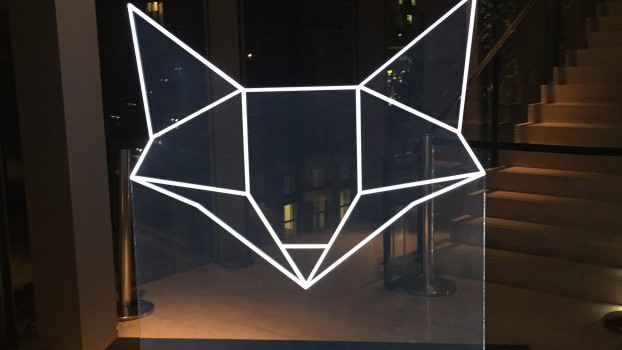Reality Check tests advertising creative against a random sample of 300 consumers to determine, among other things, whether they liked the commercial, whether they could identify the sponsor, whether they understood the message and whether, after seeing the spot, they’d be more likely to buy the brand advertised. The survey is carried out by Impact Research on a spot of Strategy’s choice. Kathleen Deslauriers, Impact’s general manager in Toronto, provides the analysis.
Advertiser: Lever Pond’s
Product: Degree antiperspirant
Commercial: "Lingerie"
Tagline: "For any degree of stress"
Description: The scene opens on a woman dressed in matching red lingerie, consisting of a bra, panties, garter belt, stockings and a feather boa draped across her shoulders. A stress meter is displayed on the right side of the screen. The woman is looking herself over in a full-length mirror, which is attached to the bathroom door. She smiles at her reflection, opens the door, poses seductively against the left side of the door frame and says, "Honey…" At this point, we see her husband asleep on the bed and snoring. The woman groans at the sight and rolls her eyes. At the same time, the reading on the stress meter increases, along with accompanying sound effects.
The film then appears to rewind to the beginning of the commercial. This time, when the wife says, "Honey…", her husband is busy watching television and barely glances at her. The woman is clearly frustrated, and we see her stomp her foot and throw her head back. Again the reading on the stress meter and the sound effects increase, but to an even higher level than the last time. The commercial rewinds one last time to the beginning.
This time when the woman opens the door, music begins to play. As she says, "Honey…" we see her husband reclining suggestively across the bed, facing her. He brushes one hand through his hair, and leaves it behind his head. However, he is wearing black lingerie consisting of a bra, panties, garter, and stockings. The woman is so startled that she gasps and takes a step back. At the same time, the reading on the stress meter and sound effects reach their highest levels. The scene then switches to a black screen. A voice is heard, and white words are written across the right side of the screen, while the product is displayed on the left.
How the test commercial fared: Though tested relatively early into its flight, this commercial for Degree already succeeds at many levels.
Considering the intentionally extreme approach used to communicate Degree’s body-heat activation, it is not surprising to find that the commercial reached 57% of the sample. If the execution had benefited from 750 GRPs at the time of the survey, it should have reached only 35% according to our normative data. Even at 1,500 GRPs, the spot still surpasses the 45% norm for reach.
Due in part to its strong reach, Degree was able to break through the clutter, obtaining 29% in unaided advertising awareness, ahead of such long-term advertisers as Secret (18%) and Mennen Speed Stick (13%).
The commercial’s reach also helps to explain why Degree obtained 11% in top-of-mind brand awareness. This is an impressive score when one considers that the gap between category "heavyweights" such as Mennen Speed Stick (20%) and Secret (16%) is not very wide.
The commercial’s brand linkage is also high: 42% of those "reached" by "Lingerie" named Degree as the sponsor. At 750 GRPs, we would expect a correct identification score of 31%, or 40% had the commercial been supported by 1,500 GRPs. Even more remarkable is the 56% correct brand linkage among 18-34 year olds, the execution’s target (versus 27% among older participants). Not surprisingly, sponsor identification is greater among females than males (47% versus 37%).
With 81% of those "reached" liking the commercial very much or somewhat, "Lingerie" surpasses our 74% standard. Although the scores are virtually the same between the sexes, 18- to 34-year-olds did show greater appreciation than older respondents (89% versus 72%). The humorous scenario in general and the surprise ending in particular are major pillars in the appreciation of the execution.
At 42%, the execution is almost on par with our 45-50% rule of thumb with regard to "astute" message comprehension. However, as is the case with the media plan, the reader must keep in mind that the advertiser has not shared with us the specific communications objectives. Thus, we could have been somewhat strict in judging what messages are "astute". It should be noted that 31% of comprehension
responses said Degree can handle all levels of stress, a response that we consider astute. We rarely see such a high score for a comprehension response, which we feel is a strong indication that the message is single-focused and powerful.
At 11%, the top-box score for purchase intent is a bit low in comparison to our 15-20% rule of thumb. This might stem from the fact that we conducted the survey early in the campaign, or the extreme nature of the situation depicted, which might not resonate as strongly with some consumers.
Perceived wear-out is somewhat on the high side: 21% of those "reached" feel that "Lingerie" has been broadcast too often. This score is close to our 25% threshold. Beyond that point, some thought should be given to reducing the commercial’s media weight. Quick wear-out is often the fate of commercials relying on humour. Luckily, the Degree campaign does not rely solely on the "Lingerie" execution and wear-out could perhaps be held in check.
Methodology: From March 9-16, 2000, Impact Research interviewed 301 Toronto CMA residents over the telephone about "Lingerie." Within the sample, there was an even split according to sex and, within each gender group, equal representation of two age brackets: 18-34 years and 35-64 years. The maximum margin of error is plus or minus 5.6% at a 95% level of confidence.
After measuring unaided brand and advertising awareness, we prompted recall by describing the visuals in detail.
If the consumer recalled seeing the commercial as described, we considered him or her "reached" and we then continued the interview to assess other variables such as sponsor identification, message comprehension, appreciation, and purchase intent.
To accurately gauge brand linkage, we did not include the name of the sponsor or the product in the commercial’s description. As well, we did not reveal any message cues or the tagline. This allowed us to assess message comprehension after exposure to the execution in "real life."
























